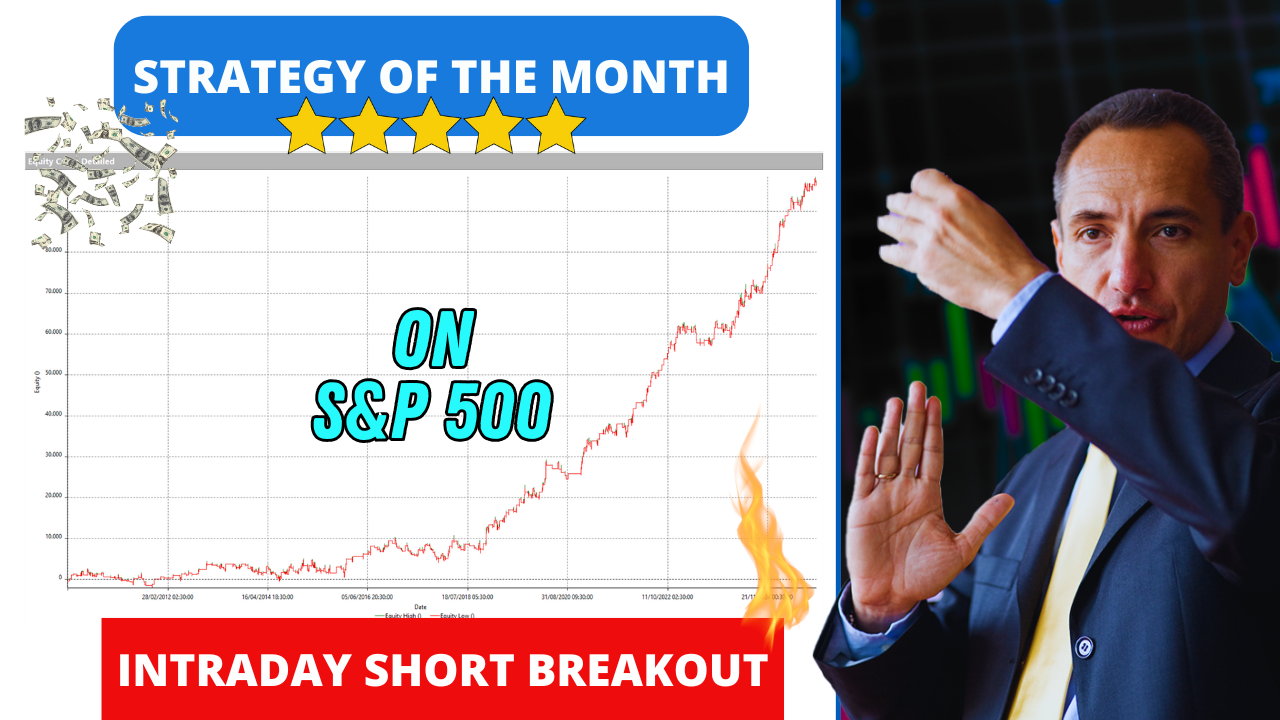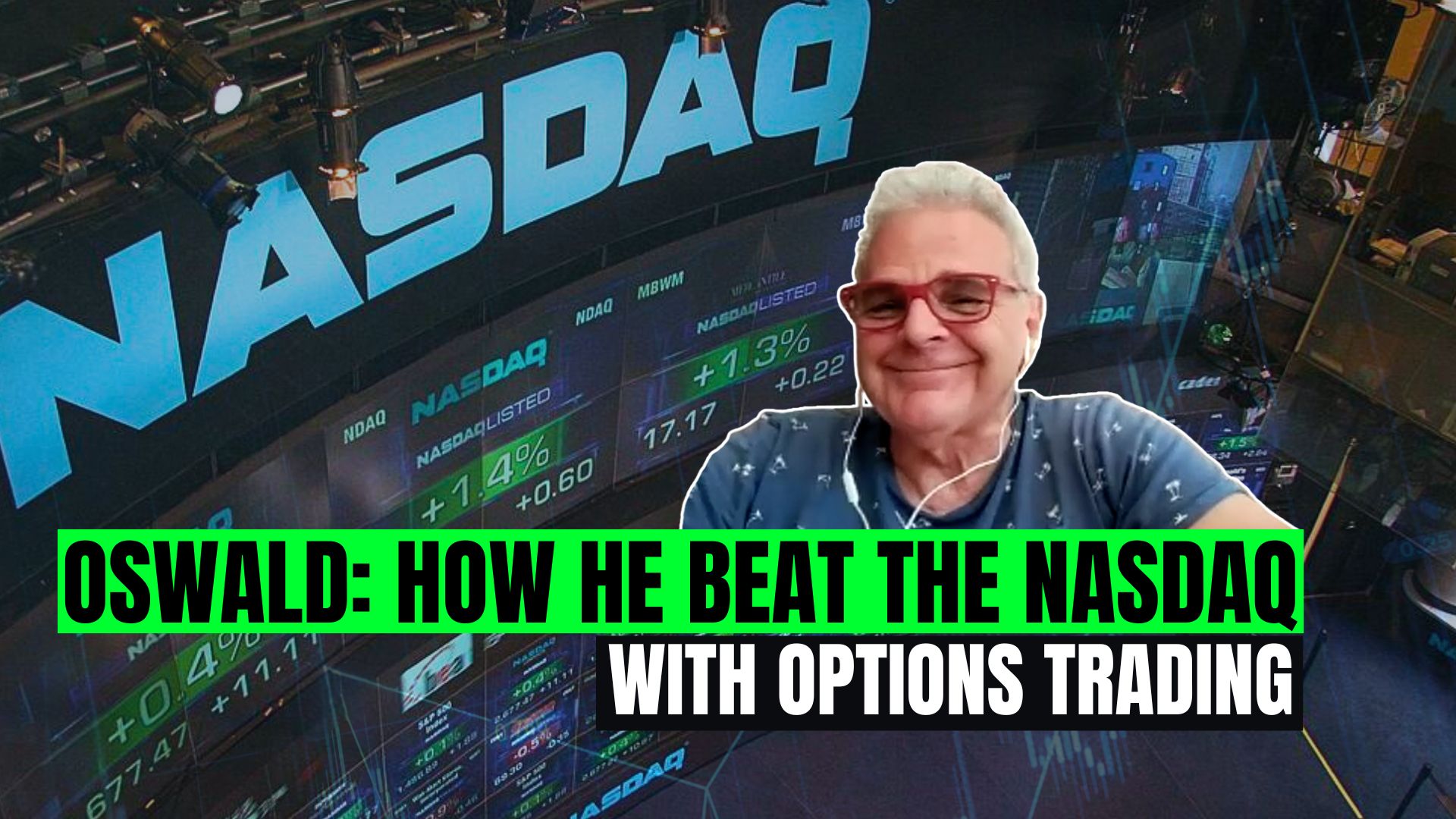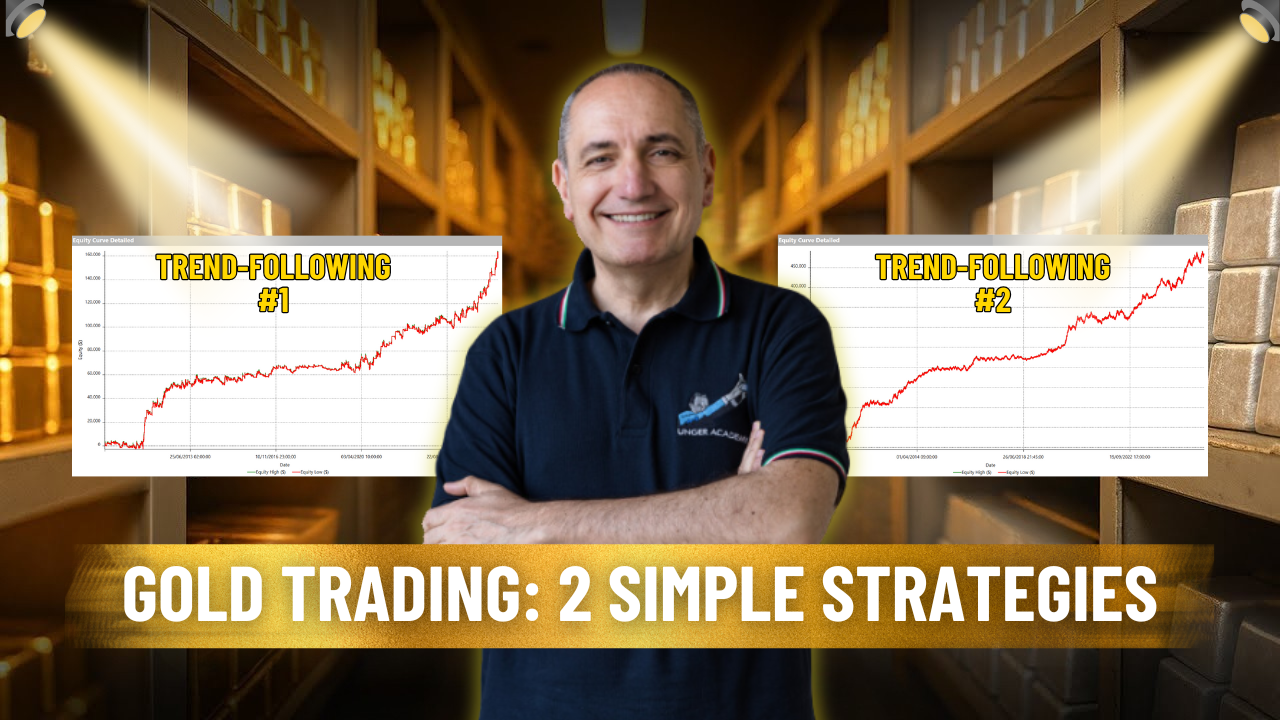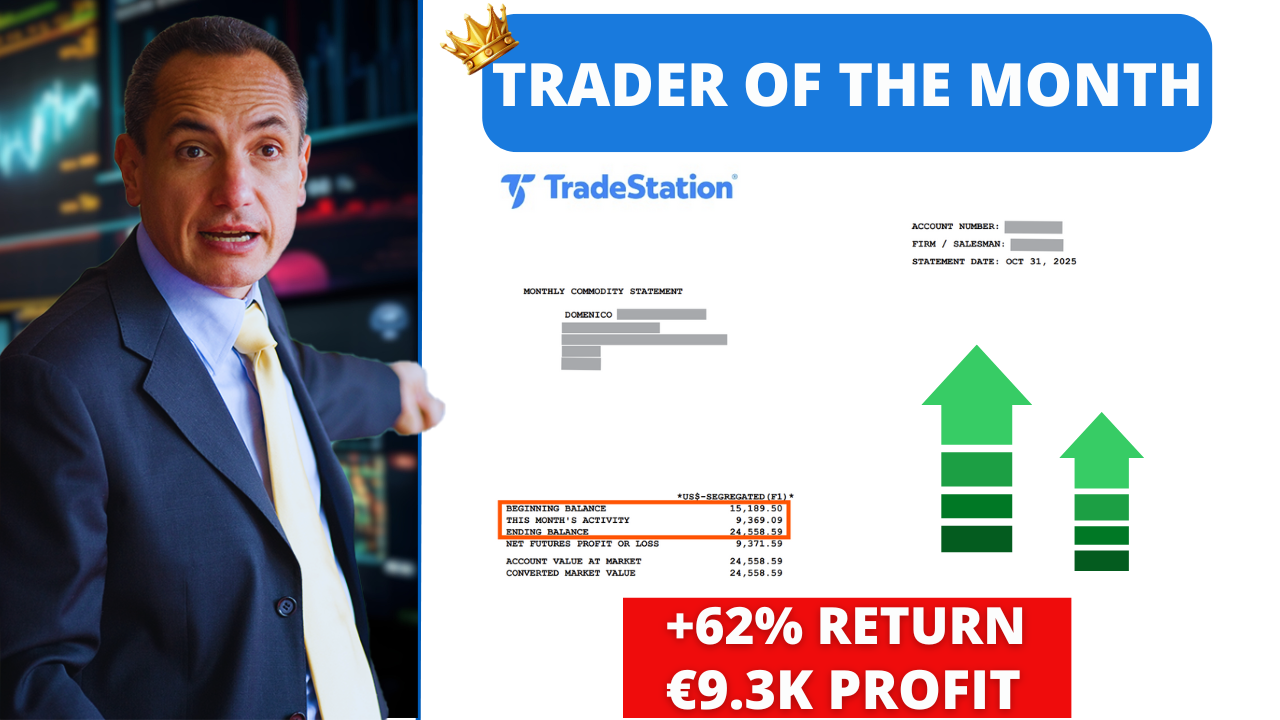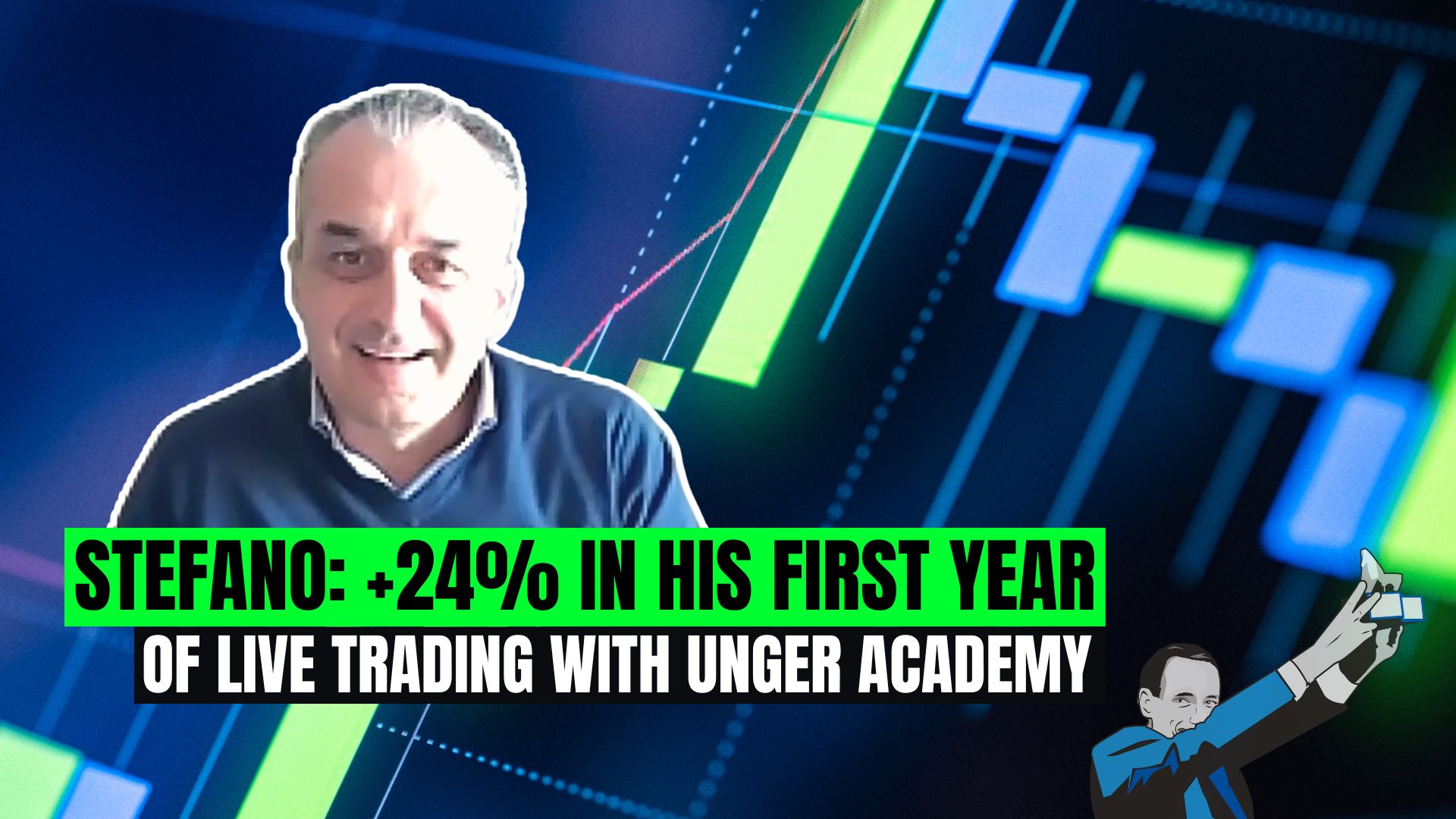Hi guys, hi from Andrea Unger.
We are suffering volatility in the market these days, I suggested better not to trade under these conditions in the previous contribution here on these video series.
But, is volatility really an issue or could it be an opportunity as some people think?
Should we trade the same way we normally do or should we maybe adapt our trading to the situation?
What are the opinions?
Somebody says that we should use levels of stops proportional to the increasing level of volatility.
This makes sense, but in the current situation of volatility, if we would do so, the maths would lead us to such an incredible huge level of stops that would probably stop our trading anyway because too far from what we can cope with.
Somebody also suggests adapting the size of our positions, so to use a volatility-based position sizing algorithm and this also makes sense, but the higher the volatility the smaller the position.
The volatility is now so high the position should be scaled down so much that to have something would mean we should have a multi-million account, which maybe you have, but in any case it’s just to let you understand that we are at such high incredible level of volatility that this procedure of scaling down proportionally to volatility doesn’t really make sense if we have normal accounts of some tens thousands of dollars or things like that.
But, the question that comes from is: can we use volatility? Should we use volatility in some way? Should we use the information of this increased volatility to decide what to do and how to do it in our trading? Should we change it? Should we…
Well, I’m not answering myself, but I will leave the answer in the words of my business partner, part of Unger Academy as well, Francesco Placci.
He is our real expert on volatility and he is the one everyone refers to when we have questions coming about volatility, options trading and so on.
He will not tell you about options don’t be afraid if it is not your field, but he gives you some interesting information and results of his research on volatility itself, but volatility in this period.
So listen carefully to Francesco…
Hi guys, I’m Francesco Placci.
In this short video, I would like to examine the particularity of the current situation of the market, with reference mainly to the term structure of volatility.
The aim is to give you some ideas that may also be useful to you to build your own trading systems.
Now we are seeing the VIXcentral website which tracks the volatility term structure.
It allows us to check the prices of all listed VIX futures in real-time.
The volatility structure during market crashes
At the same time, it is possible to check the prices of the VIX index and all the volatility indices.
I want to point out that the current term structure is in strong backwardation, which is quite unusual.
This is mainly due to the fact that we are witnessing an explosion of volatility.
The current value of the VIX index is greater than 70.
As we know this is not normal, usually, the term structure is in a contango state, which means that the futures with shorter maturities have lower prices than futures with longer maturities.
At the moment, however, due to the fall in the financial markets, we are witnessing a very strong backwardation.
In fact, the ratio between the VIX and the VIX at 3 months is very high and is equal to 1.23 and obviously, this is a warning sign, so we are in a very particular market condition.
Volatility: an opportunity with the right system!
I want to start from this point to ask myself a question.
Is it appropriate to trade when we are in such a particular situation?
To answer this question, I want to start by showing you a trading system that I actually use.
It is a system that trades shares, the 500 most liquid shares of the Nasdaq this system, uses mean-reverting logics, basically, it buys on dips, but the thing that sets it apart is its regularity.
We have seen several drawdowns in recent years, but despite this, the system has been able to return constant performance over time.
One of the tools that this system uses, is precisely a volatility filter the purpose of which is to inhibit the activity of the system when we are in the presence of excessively high volatility.
This filter is very simple and is based on the prices of the VIX index, which you see on data 2.
So this filter is ranking of the last 100 observations of the VIX Index prices.
The aim is to understand if today’s value of the VIX index is at the top of the ranking.
If this value is within the highest percentiles, as it is currently the case on the markets, then the activity is suspended.
To make you understand the effectiveness of this filter, we are going to disable it and to check the performance of the system without it.
Here we are, this would have been the results without using the volatility filter.
As you can see the equity line is still all in all good, but less regular than before, and we have some bearish spikes.
In my opinion, the positive contribution of this volatility filter is quite evident.
What I want to underline is the opportunity to trade or not to trade in these high volatility days.
Starting from these considerations and in particular, from the indicator we have seen, I asked myself if it is possible to build a hedging system to be added to the classic mean-reverting trading style that is usually used on the future miniS&P500.
As you know, during market crashes like the current one, mean-reverting systems suffer losses.
If it is true that buying equity indices on dips is generally profitable, it is not when the market enters in panic mode.
In a way, it seems as if everything that usually works on S&P500 future, stops working when the volatility is excessively high.
So what can we do?
Volatility: mean reverting or breakout?
We can try to invert the logic and build the breakout trading system on the S&P future that is activated when volatility is considered very high by the previous indicator.
So I want to show you this recent study, it is a trading system that I have never used, and it is based precisely on the rules that I have just reported to you.
It buys and sells in breakout only when the volatility filter reports excessive volatility.
I remind you that the indicator is nothing more than a ranking of the last 100 or 150 observations of the VIX index.
So the filter will allow the system to operate only when the last observation, the most recent one, is at the top of the ranking and this means that we are in a high-volatility environment.
Here you can see the long equity line and this one is the short one.
The initial idea was to create a hedging system and therefore I started from the short side.
Then I realized that a long side too was profitable.
This one is the long equity line and this one is the long/short equity line.
The performance seems to be very good, it is a simple trading system that works in breakout and its engine, its core, is the volatility filter that I have already talked to you about.
In conclusion
So guys, my purpose was to give you a starting point that will be useful for your mean-reverting systems, to stop trading on days of excessive volatility or to build a hedging trading system.
What I suggest you do is trying to use this filter or something similar within your trading systems.
I think you may find it very useful!
So guys, that’s all for now.
I hope you found these tips useful.
Bye…
So guys, this was it!
So I hope you enjoyed it.
You’ve seen that Francesco as everybody here in the Unger Academy bases his decisions and his research on numbers.
This is what we algo traders do, we make decisions, but these have always to have numerical evidence of the potential benefits they could lead to.
So numbers are what we base everything upon, this is systematic trading, it might mean that everything is automated on the machine, but it also means we use numbers to make our decisions.
Ciao from Andrea Unger, see you next time, ciao…

